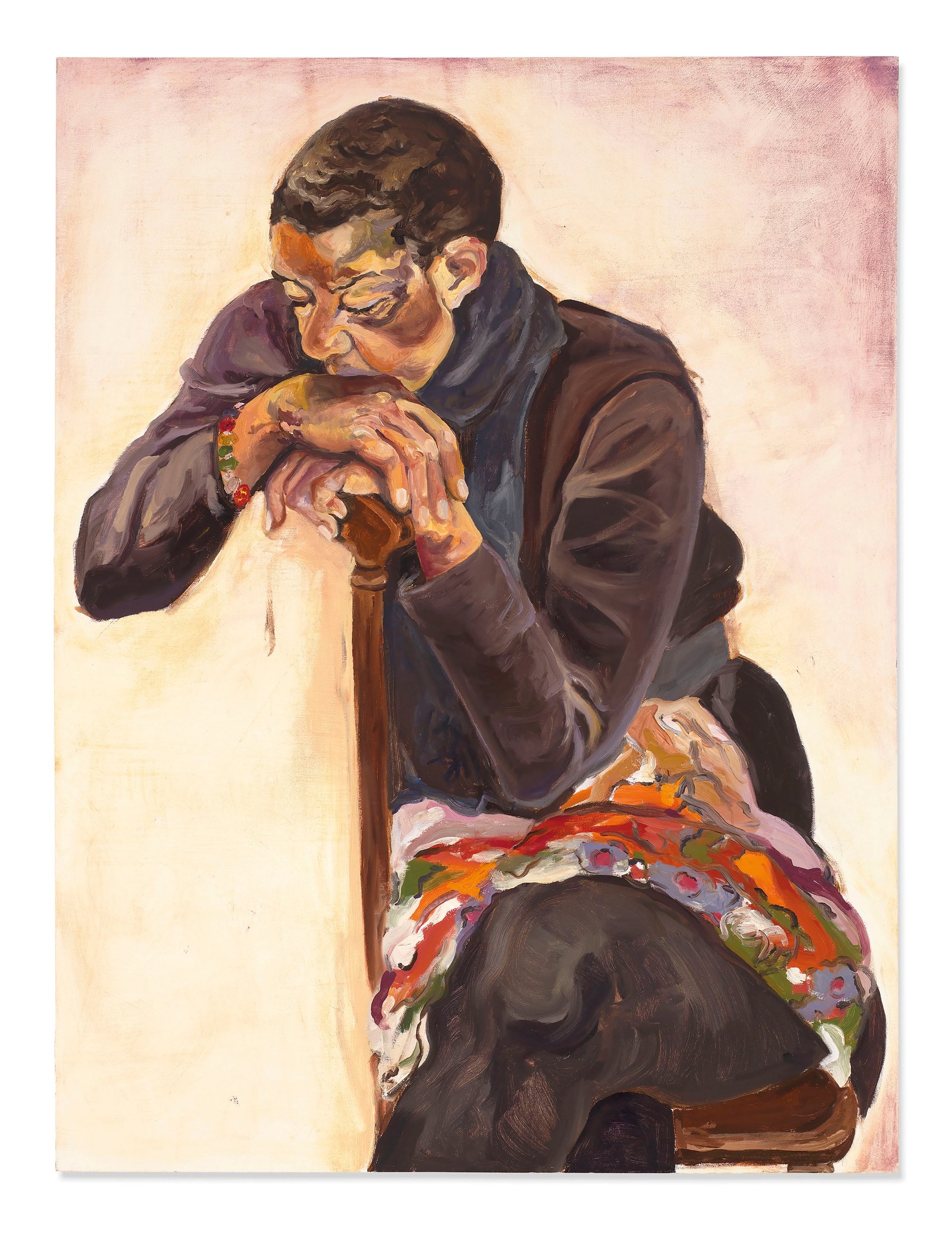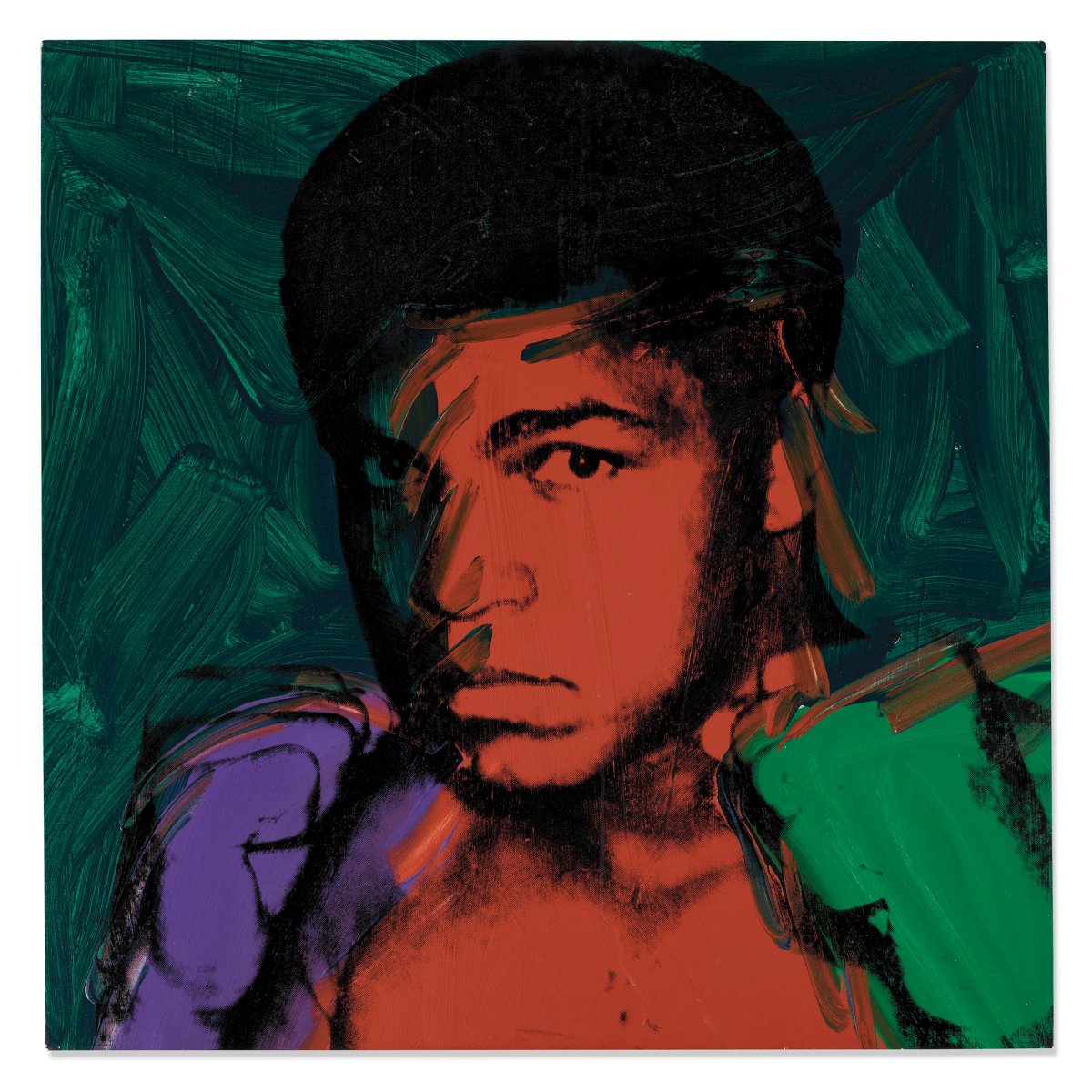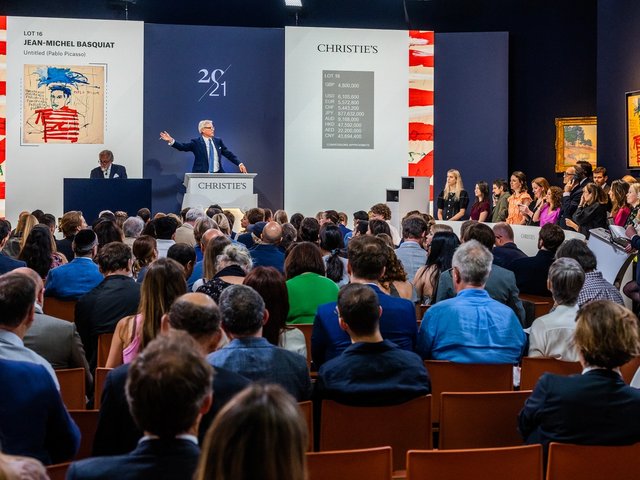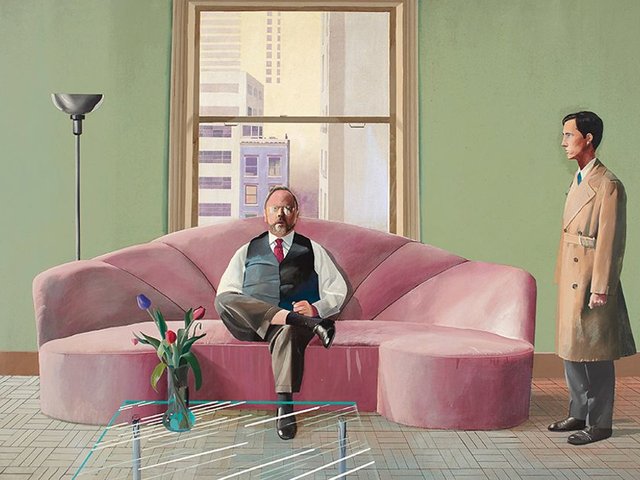Consigning for Christie’s contemporary art evening sale last night was, by all accounts, brutally difficult and it showed in the total: £46.8m (£56.2m with fees)—down around 30% on last year and the auction house’s lowest result for this season in a decade. The pre-sale estimate was £43.4m-£62.3m.
A dearth of big-ticket lots—none breached the £5m mark—contributed to the drop; last year Christie’s bottom line was boosted by a David Hockney double portrait, which sold for for £33m (£37.7m with fees). It was also a Hockney that swelled Sotheby’s coffers by £21m (£23.2m with premium) on Tuesday night, albeit on a single bid, possibly to the guarantor.
Acknowledging “it was not our season for masterpieces”, Cristian Albu, Christie’s co-head of contemporary art, said after the sale that three years’ of Brexit had put a strain on business, as had the added uncertainty of a general election, which landed in the middle of the winter consignment period.
Perhaps out of necessity, Christie’s “tried to make the sale more diverse”, Albu said, and generally the room responded well, with only 11 lots selling on a single bid. There was some pizazz around the first three lots, which foregrounded young female painters from the US. Jordan Casteel’s tender portrait of her mother from 2013, acquired by the consignor from the artist in 2014 and just off view from Denver Art Museum, attracted multiple bids, doubling its high estimate to sell to a phone bidder for £420,000 (£515,000)—a record for the artist.

Jordan Casteel, Mom (2013) sold for £515,250 Courtesy of Chrisitie's
Asian underbidders, meanwhile, drove up the prices for Dana Schutz and Tschabalala Self, in second and third place, respectively. Schutz’s cacophonous painting, Kissing the Dump (2004), just nudged its high estimate, selling to Alice de Roquemaurel, Christie’s head of private sales in Europe, for £570,000 (£695,250 with fees). Self’s, Spare Moment, executed in 2015, the year before she was propelled onto the global stage, had six phone bidders, but Katherine Arnold, Christie’s co-head of contemporary art in Europe, won out at £170,000 (£212,500), double the low estimate.
Notably, Schutz and Self, as well as Cecily Brown whose Girl Trouble (1999) sold to a client in Taipei for £1.3m (£1.5m with fees), are currently on show in the Whitechapel Gallery’s Radical Figures exhibition, which Christie’s has sponsored. Albu said the decision to support the museum show came out of discussions with dealers who encouraged the auction house to contribute.
Albu added: “We are in constant conversation with all the galleries, foundations and museums and wanted to bring an awareness [of these artists] to the market alongside the museum [show].” The Whitechapel exhibition is likely to have helped prices, fuelling the debate around how much market forces are influencing museum programming.
Morgan Long, a senior director of The Fine Art Group, suggested consignors of these lots are likely to have been swayed by the promise of an early slot in the running order. “Christie’s was a little bit creative in those first few lots and gave space to artists who would normally be consigned to a New York day sale,” she said.
To a large extent, Christie’s was banking on Andy Warhol, with no less than 13 works by the US pop artist on the block. Despite Warhol’s market being “a little bit soft overall”, as Long put it, his works totalled £13.8m, accounting for nearly a quarter of the sale.
Ten paintings were from Warhol’s Athletes series, commissioned directly in 1977 by the late collector Richard L. Weisman. Lévy Gorvy gallery was the determined underbidder on the portrait of the champion boxer Muhammad Ali, which eventually went on the phone to a US bidder for £4.2m or £4.97m with fees—the top lot of the night.
Sportsmen fared better than sportswomen, even those with chequered histories. The portrait of the former American footballer O.J. Simpson went for £320,000 (£395,250; est £200,000-£300,000) to a US bidder seemingly undeterred, if not spurred on, by Simpson’s notoriety.
Lock Kresler for Lévy Gorvy, meanwhile, was the winner of Warhol’s Flowers (1964) at £1.75m (£2.1m with fees). “Coming out of the UniCredit bank collection, it was in great condition with a very low estimate at a million pounds,” Long said, noting that she had recommended the work to a client as a good buy. “It’s a classic example. Warhol Flowers is money in the bank.”
Warhol’s Knives (1982), which racked up £2.3m (£2.8m with fees) against a £2.5m-£3.5m estimate, was one of eight lots to be guaranteed by a third party. A ninth work, by Wade Guyton, was guaranteed by Christie's, but sold £100,000 below estimate. Meanwhile, one work was withdrawn prior to the sale—a Christopher Wool painting estimated at £3m-£5m—and just one lot, a niche On Kawara date painting, failed to sell.
Christie’s, along with the rest of the London market, will no doubt be hoping for confidence to return in time for the June sales. Long is cautiously optimistic: “People will be much happier to revisit London consignments this summer, just because we know what the playing field is now—to some extent at least,” she said.




